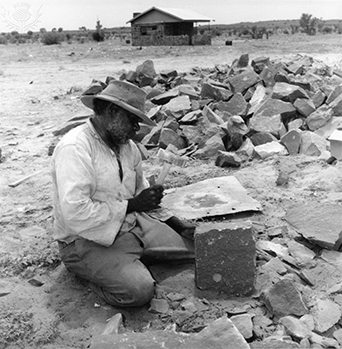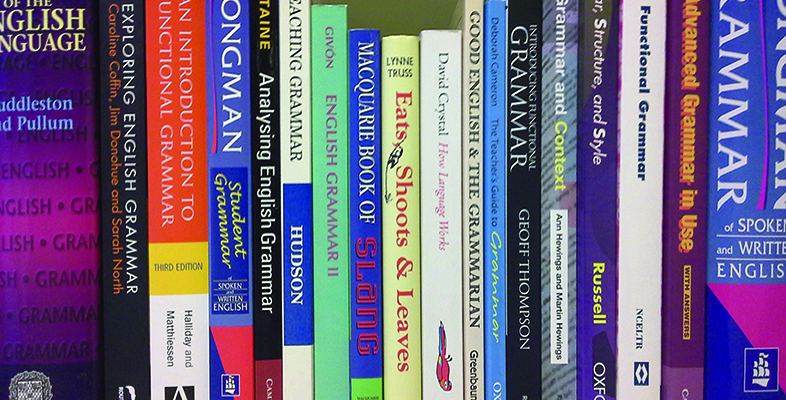3.1 Representing events
In the following activity you will explore a further illustration of the ideational metafunction: how different lexicogrammatical choices represent events in different ways.
Activity 7: ‘The Killing Time’

Read the following short text, which was part of an exhibition at the Australia Museum in Sydney. The text is about the arrival of white colonial settlers in Australia and its devastating consequences for the indigenous population. Make notes in the first text box about how the passage represents the Warlpiri people and the events which occurred.
When Europeans arrived, the way of life of the Warlpiri people was changed.
The best land was taken over by Europeans for cattle and sheep and the Aborigines had only the desert land to live in.
In 1928, a severe drought forced Warlpiri people from the desert. Some tried to get food and water on the better land and fights broke out. A large group of Warlpiri people were killed by Europeans. The Warlpiri refer to this as the Killing Time.
Those people who remained became dependent upon European society and were resettled at government controlled townships like Warrabri and Yuendumu. There, many people were alienated from their own country, their dreaming and their spiritual guardians.
Now look at the passage for a second time, paying particular attention to the verbs used to represent past events or processes. These have been highlighted using italics. Make a note of whether each verb form is active or passive, who is the agent and who is ‘acted on’ by the action represented by the verb in each case. In the second text box, make a note of whether this closer look has altered your interpretation of the passage.
When Europeans arrived, the way of life of the Warlpiri people was changed.
The best land was taken over by Europeans for cattle and sheep and the Aborigines had only the desert land to live in.
In 1928, a severe drought forced Warlpiri people from the desert. Some tried to get food and water on the better land and fights broke out. A large group of Warlpiri people were killed by Europeans. The Warlpiri refer to this as the Killing Time.
Those people who remained became dependent upon European society and were resettled at government controlled townships like Warrabri and Yuendumu. There, many people were alienated from their own country, their dreaming and their spiritual guardians.
Discussion
This passage was used by some Australian linguists and colleagues (Ferguson et al., 1995, p. 7) to explain to museum educators how their lexicogrammatical choices shaped the way they represented Australian history and culture to museum visitors.
They comment that the first impression given is that this is quite a progressive take on events. It acknowledges past violence by European settlers and appears to represent the Warlpiri point of view. There is no attempt to disguise who did the killing. On the other hand, closer analysis of the verb groups used in the passage provides a different perspective. The Warlpiri are often referred to as being affected by events rather than as agents (e.g. a severe drought forced [them] from the desert). Where the actions of the Warlpiri are referred to using active verb forms, the choices made convey a sense that their agency is limited (e.g. they tried to get food; [they] became dependent). Also, the most violent act referred to is written in the passive, lessening its impact: A large group … were killed by Europeans). The authors argue that the text unwittingly perpetuates a view of Australian history which subtly promotes cultural stereotypes and downplays the enormity of colonial violence. In doing so, they demonstrate that a detailed analysis helps to explain how ‘a particular orientation is constructed for readers’ (p. 7), even in a seemingly objective text. They show museum curators that they need to be highly conscious of their language choices in order to avoid giving unintentional messages.
Whether or not you agree with this particular interpretation or not is less important here than understanding how such choices matter when it comes to representing how the world is and what happens in it.
